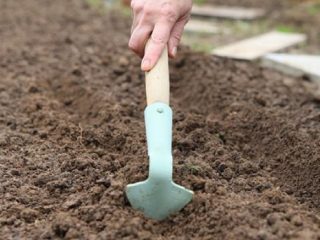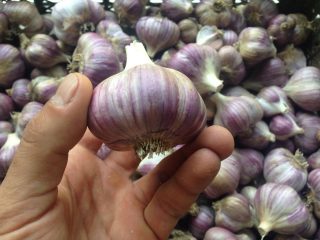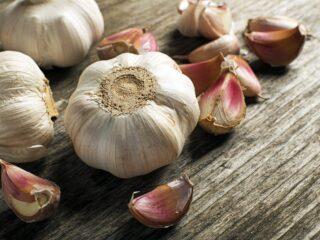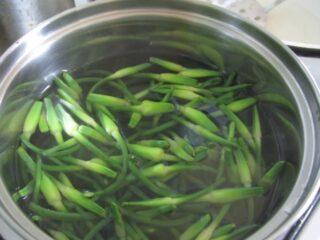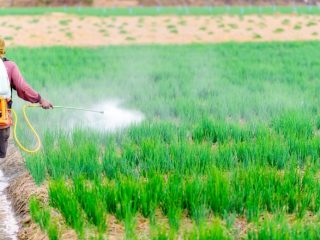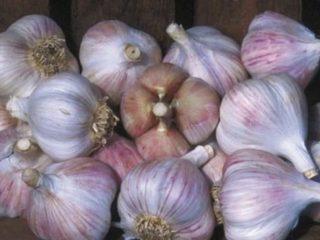Content
Pathogenic fungi are the cause of many diseases in the plant world. Spores easily spread throughout the plantings at the slightest breath of wind. Agricultural technicians know measures to combat rust on garlic, aimed at eliminating a common fungal infection.
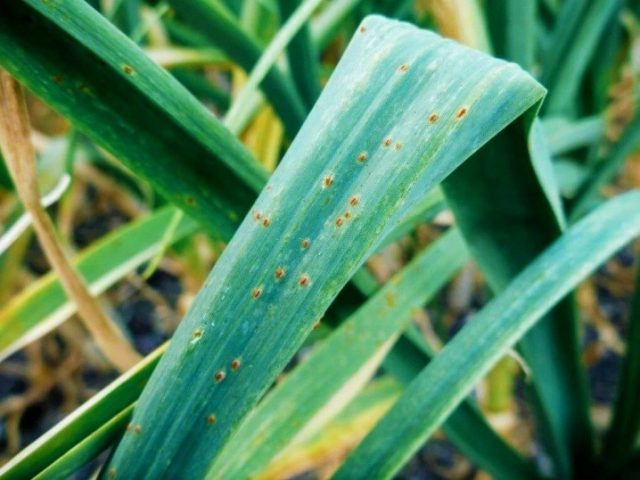
Rust often affects not only all varieties of garlic, but also leeks, shallots, and onions
Why does garlic rust?
Garlic is one of the popular vegetable crops grown by gardeners. A good harvest can be obtained by observing agrotechnical growing conditions and timely treatment of plantings from pests and pathogens. Rust that affects garlic is an insidious disease that leads to the death of the plant.
The spores of the harmful fungus do not die during wintering; they lurk until spring in the remains of old plants. With the onset of warm days, the infection is activated. Factors predisposing to rust infection of garlic plants are:
- High air humidity coupled with cold weather. At low temperatures, spores carried by wind and rainwater fall on young shoots.
- Unharvested garden in autumn.Plant remains are a haven for various types of mycotic infections.
- Failure to comply with crop rotation.
Experienced vegetable growers know that if you place garlic and other bulbous crops in the same area year after year, rust will certainly appear. Hence the recommendation: change planting sites every two years.
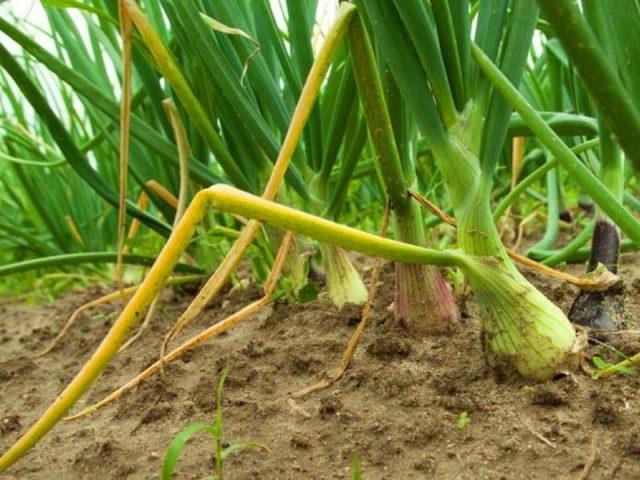
The source of rust is perennial onions, so beds with garlic are placed away from them
Symptoms of the disease
Rust causes significant damage to the plant. The disease leads to impaired absorption of nutrients and minerals, as a result of which garlic stops developing and its taste changes for the worse.
The asymptomatic period for rust infection lasts several weeks. At an early stage, whitish dots appear. As the disease progresses, the first thing that catches your eye is rusty spots on the leaves of garlic. Yellowish, convex oval-shaped formations - pustules become brown over time. The spots gradually grow, foreign formations slow down the process of photosynthesis. Fungal spores develop in pustules and spread to other parts of the plant.
Consequences
When cultivating bolting varieties of garlic, symptoms of infection are noticeable on the stem. Damaged green feathers begin to dry out and die, causing the head to fail to form. The root system is rotting. Weakened plants produce a poor harvest, and the shelf life of the bulbs is significantly reduced.
At the last stages of the growing season, the spotting on the arrows becomes black. The spores found in the pustules are spread throughout the surrounding area, infecting other vegetable and berry crops.
What to do if garlic leaves are covered with rust
To successfully combat rust, it is necessary to identify the disease in the early stages, periodically checking the plantings. The first signs of infection are easily detected on the arrows if you carefully examine them. The appearance of yellowish dots signals the need for medical procedures.
Chemicals for rust on garlic
Treatment of plantings begins with the removal of infected shoots. After harvesting, garlic feathers covered with spots must be burned. Having eliminated the diseased parts, it is necessary to treat the plants with fungicides, the active component of which is sulfur. Among the effective drugs against rust on vegetables:
- Topaz;
- Strobe;
- Quadris.
The last of the mentioned products is especially recommended for use by agricultural technicians. Quadris shows stable results in the treatment of rust. Gardeners consider traditional fungicides to be effective drugs used in improving the health of garlic plantings:
- Fitosporin-M;
- Oksikhom;
- HOME.
These remedies help get rid of more than just rust. The drugs help cure another disease that is no less dangerous for garden crops - downy mildew.
Biological compounds are effective in combating fungus. Agrotechnicians recommend:
- Gamair;
- Alirin-B.
Biological agents are more expensive than conventional fungicides. But they are more environmentally friendly and do not harm the environment.
Dilution of drugs must be carried out in accordance with the attached instructions. Treatment of plantings against rust is carried out on the day when the working solution is prepared. If measures are taken in time, the formation of spores stops, reducing the risk of infection of garlic plantings. Secondary treatment is planned in about a week.
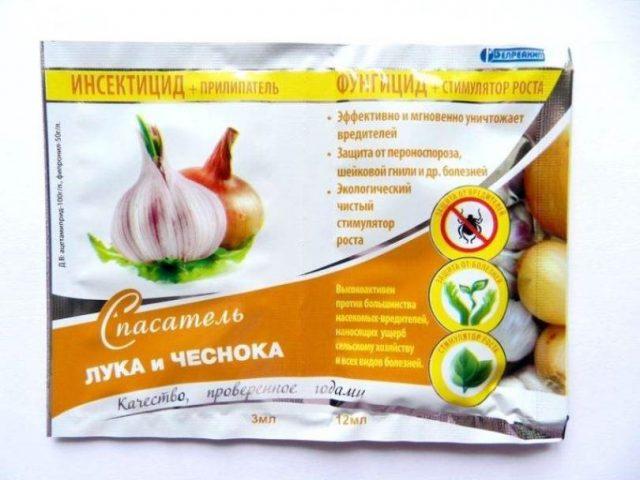
The product “Onion and Garlic Rescuer” contains, in addition to a fungicide, an insectoacaricide and a growth regulator.
Folk remedies
Centuries of experience in gardening have led to the development of recipes for remedies that are effective in combating fungal plant infections. Popular folk remedies in the treatment of garlic plantings are:
- Ammonia diluted in water, calculated as a tablespoon per 10 liters of water. The solution should be poured under the root so as not to damage the greens. Another method is fine spraying of leaves. The use of ammonia allows, in addition to treatment, nitrogen fertilization.
- Tar soap. To obtain a working solution, dilute a grated pack of soap in a bucket of water, stirring thoroughly, and water the garden bed.
- Baking soda. A substance popular in households is one of the means used to rid vegetable crops of rust. To prepare the solution, a glass of soda is diluted in 10 liters of water. Garlic is also watered at the root.
If the infection has caused significant damage to the plantings, it is recommended to use Bordeaux mixture. Copper sulfate slows down pathological processes in plant tissues and, accordingly, prevents the spread of spores to garlic plantings and other vegetable beds. The main signs of rust and ways to combat infection are presented in the video:
Preventive treatment of garlic against rust
The main measure in the fight against rust on garlic is the implementation of preventive measures. To prevent infection, agricultural technicians recommend:
- In the fall, carry out a high-quality cleaning of the garden plot. Destruction of the remains of rotting plants and deep digging of beds help eliminate fungal spores.
- Process the planting material. The most effective remedy in the fight against fungus is the rays of the sun, so garlic cloves are laid out on a clean cloth or paper and kept outdoors in a well-lit place.
- Spray the material intended for planting with furatsilin solution. To prepare the remedy, ten tablets of the drug are dissolved in settled water.
The use of a 40% formaldehyde solution gives excellent results when preparing seed material. The cloves, cleared of excess husk, are moistened with the product and placed in a canvas bag for ten minutes. Then everything is put in a plastic bag and kept for two hours. In a harsh chemical environment without access to air, all infectious agents die.
In order to combat rust, plantings should not be allowed to thicken.Reduced air circulation is a predisposing factor for the development of fungus. The optimal distance between the cloves when planting is 6 cm.
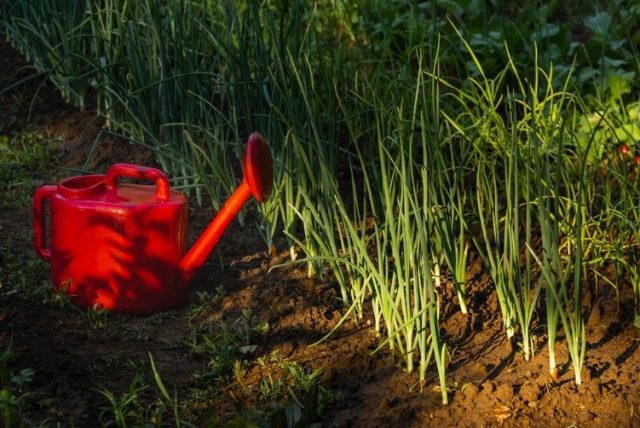
In cool weather, garlic should not be watered in the evening, creating an ideal environment for fungus
Conclusion
Measures to combat rust on garlic can prevent the spread of infection and preserve the harvest. Methods for processing plantings are available even to novice gardeners. An important condition for plant protection is timely organized preventive measures.
